My Journey in Photographing Nudes
![]()
This photo is Untitled (1977) by photographer Jerry Uelsmann — it was my key inspiration. It took one curvy shaded line to make the rock alive and sexy. This was on the wall in my living room when I was 14 and I looked at it for countless hours.
I grew up in a home covered in historic photos from folks like Adams, Cartier-Bresson, and Kertesz. But to be honest, I was more interested in the nudes. Maybe it would be better to cop to it and just admit that I was a horny teen boy and these were sexy to me; I was well aware that I couldn’t go to a 7–11 and buy a Playboy magazine but I could sit around my living room and look at any number of naked bodies photographed by Ruth Bernhard, Jerry Uelsmann, Lucien Clergue, Harry Callahan, Ed Weston… as a teenager I felt like I had seen a lot of women’s bodies from a lot of points of view, but I didn’t yet know how I’d see women — I was still developing an understanding about attraction and sexuality. A camera, as someone famous said, gives you permission to look. And I wanted permission.
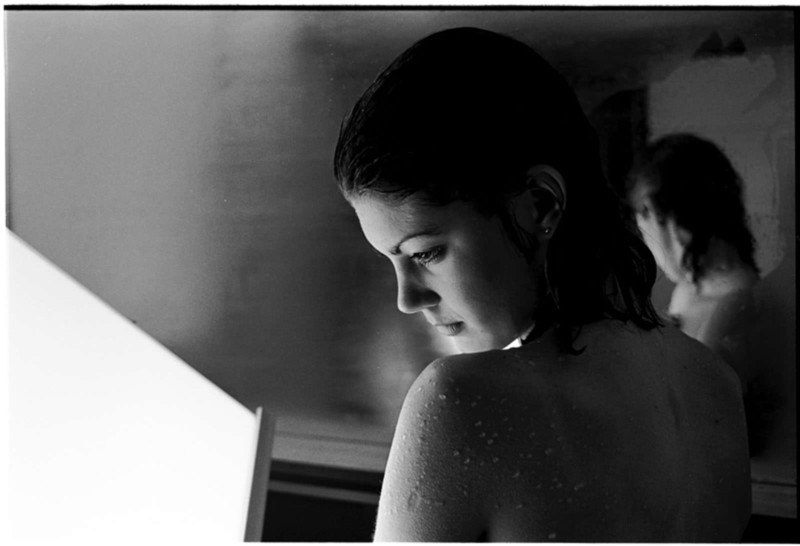
I don’t like saying it out loud, but I’ve always felt that I was an awesome photographer — I’m not a gifted musician, I can’t draw. But composing objects in a frame always felt natural.
It seemed my high school was filled with beautiful girls. None would go out with me, of course, but a few were okay making themselves vulnerable for the camera. That was fine with me; I enjoyed their trust and intimate company. While my buddies were roughing it in track and field after school, I couldn’t help but feel my extracurricular activities were way better than theirs. I found, however, that attractive women stressed me out; I was embarrassed to look at them. Holding a camera helped.
When I got to college this was still on my mind. During a short vacation in the middle of my freshman year, I found a semiotics student in my dorm who was willing to model for me. Karin was cosmopolitan and had a kind of nonchalance about the whole thing that gave me comfort. As a student of a unique sort of multiple image printing, I never considered the body an element that would stand alone —like Bernhard or Weston— for me, the nude form was a Uelsmann-y element in a composition, and certainly a way of introducing some provocative subject matter into my work. My primary objective was to make my photography seem more serious.
Karin took off her clothes, lit another in a long series of cigarettes, and I shot her in her dorm room, which was too dark, and then up on the roof, which was too bright. I was still embarrassed to look at her directly or talk to her much while she was unclothed. I shot one roll of film, 36 images, and disappeared into the darkroom to see how they came out.
They were okay, but I only made a contact sheet. I was too ashamed to print any. They’d need to be a lot better to warrant that effort.
A couple days later I tried again, but this time with a different dorm-mate. Michelle was an art student and had done a little modeling at RISD. Preparation consisted of hanging a sheet, to isolate her from the background, but still, this was the most uncomfortable I had ever made myself and again I made a contact sheet — just thumbnails — but wouldn’t print any. Neither Michelle nor Karin seemed to care that nothing much came of the project. It was clear this was the first and last time I would shoot anyone naked. Which was fine with me. That was in 1981.
In 2013 I turned 50 and was still taking pictures. Working at Adobe. And getting divorced. For my birthday I decided to gift myself a digital negative scanner and I finally dug up old boxes from storage that contained hundreds of rolls of developed negatives with still-organized contact sheets.
This is when I came across the never-printed pictures of Karin and Michelle. I scanned a few of the more interesting images and printed a couple on my new Epson photo printer. I wondered what ever happened to those girls. All of us were the same age; I wondered if they even remembered doing the shoot. I decided they might be enormously interested to see their pictures, even now. But I had lost track of them and wasn’t even sure of their full names.
But Facebook and Google were a thing, and within a few days, I found them. Michelle was a farmer in Vermont. Karin was teaching film theory in Paris. Completely out of the blue, after 30 years, and as non-creepily as I could, I emailed them each their JPGs, with an invitation to see more if they wanted.
Image for post
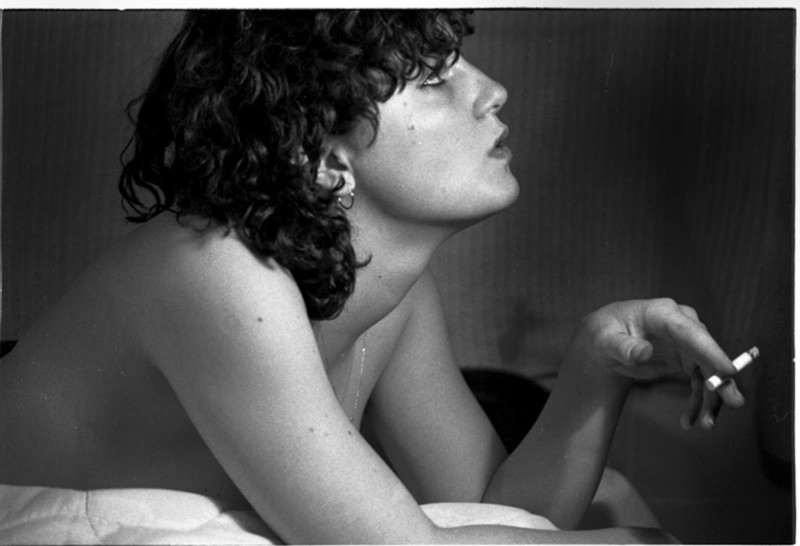
Michelle wrote back first. Of course she was happy to see the pictures, amazed to see her 18-year-old self. She felt she couldn’t show her kids but would be honored to have them. I made her some prints and sent her a package.
Karin was more enthusiastic. She was living in Paris teaching film theory. She was also writing a book and wondered if she could use one of these images as her jacket photo. I agreed. But then she had another idea: she suggested I shoot her again.
I was 50 years old and very confident in my photography, but I still hadn’t shot any nudes in the intervening decades. Maybe I was embarrassed still, or maybe I had just seen enough fine art nude work to feel like there wasn’t much I could add to the genre. It’s a tired trope in the fine art world, and I had already noticed that a lot of galleries and reviewers didn’t even want to see nudes. Not because they were prudes, but because the work is so summarily bad.
My photography was already moody and personal— but — with Karin’s proposal, I thought I’d reconsider extending the subject matter. Even my egg shell photos were sensual, I wondered what my approach to nudes would be like, particularly when I didn’t enjoy studio-types of picture taking, and zero interest in “boudoir.” I wanted to know if I could bring anything different or personal to the subject, after 30-odd years of taking pictures.
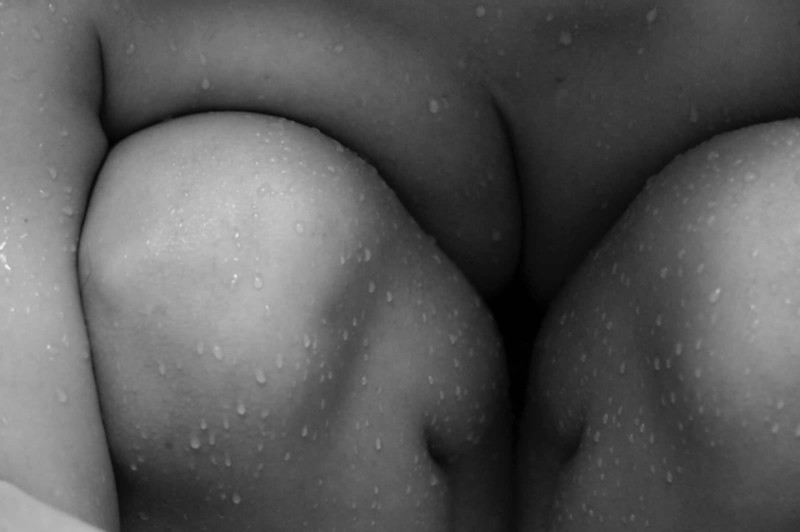
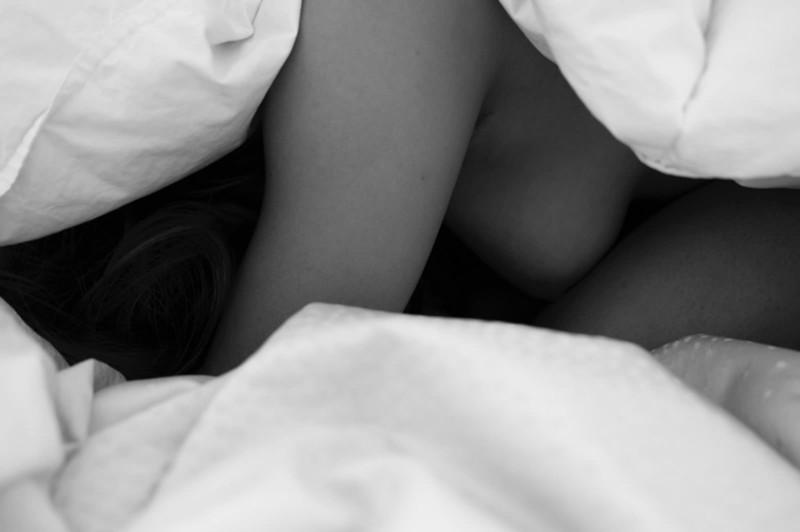
I started by hiring a model. She came to my apartment, mostly empty of furniture and lit by the expansive diffused light of Telegraph Hill, and I gave it a try. It was fun and easy. She told me the photos were the most distinctive she had received since she started modeling, which gave me real confidence. I hired a second model; same living room, same natural light, and she too delighted in her pictures. They each volunteered to return a few more times.
Working with them allowed me to crystalize an approach. I was attracted to the abstractions of the feminine body, like the early Uelsmann that inspired me, and the minimal curves, and shadows that have come to define the erotic. I wondered how minimal the image could be without becoming cryptic; how simple could it be and still capture my voyeuristic attraction to these lines.
Beyond that, I loved the constraints — of trying to make an image with relatively few variables. Like street photography, I enjoyed the improvisational and almost documentary nature of the shoots, no planning, no special tools or set up, working with what was present — I don’t really understand jazz, but imagine this is what it must feel like: skills being applied dynamically, instinctively, collaboratively, producing something very much in the moment. And then there was my anxiety and my work to breathe into it. I was still nervous, but the creative curiosity kept it in check.
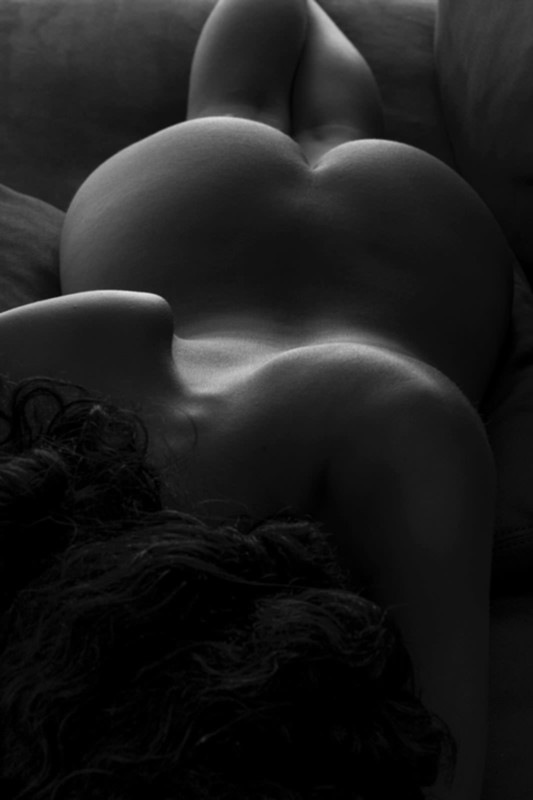
At some point, I showed the photos to a friend, a doctor, who subsequently volunteered to be shot. And she showed her images to her friends, who also wanted to be photographed… and just like that, over the next seven years, I shot hundreds with the same minimalist constraints: anonymous, living room, improvised, no props, natural light. It was an ongoing exploration of sensual abstractions. I called these the Sonoma Street Sessions. I told myself I’d stop if the pictures ever became routine or repetitive. It never happened. I stopped when I moved out of San Francisco last fall.
It’s been 40 years since I shot Karin, but I now think I’m prepared to shoot her again. We’ve texted. We’re still trying to coordinate. I think 2021, before we both turn 60.
About the author: Michael Rubin, formerly of Lucasfilm, Netflix and Adobe, is a photographer and host of the podcast “Everyday Photography, Every Day.” The opinions expressed in this article are solely those of the author. To see more from Rubin, visit Neomodern or give him a follow on Instagram. This article was also published here.
Image credits: Header photo is “Untitled (1977)” by Jerry Uelsmann